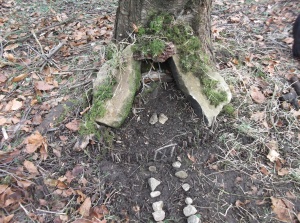Magic Potions for Learning!
As a Head Teacher I have the privilege and pleasure to spend time in many classrooms across the course of a week. Reflecting today on the week gone by I felt I had to tell you about some joyous learning that has been happening in one of my KS2 classrooms.
Firstly to set the scene:
As a school, over the last year, we have been working hard to develop active play-based learning across all key stages. This has involved examining our curriculum, our environment and most importantly our shared pedagogy of how children learn.
At staff meeting this week I gave a reminder of what we believe about how children learn with quotes from some of the theorists whose work underpins our approach. I have included these below.
Children learn through:
• Movement- ’thought in action’ Margaret Donaldson (1978).
• Curiosity- ‘I am neither very clever nor especially gifted. I am only very, very curious’ Einstein.
• Imagination- ‘Imagination is not just a cute faculty that children use to weave fantasies: It is one of the most effective tools in the learner’s toolbox’ Guy Claxton.
• Creativity- ‘Creativity should not be considered a separate mental faculty but a characteristic of our way of thinking, knowing and making choices’ Loris Malaguzzi (Reggio Emilia).
• Hands-on experience- ‘Playing around with materials or ideas just to see what happens is a powerful way of asking questions’ Guy Claxton.
• Play- ‘In play, a child is always above his average age, above his daily behaviour; in play, it is as if he were a head taller than himself’ Vygotsky.
This week in my Year 4 classroom with one of my youngest teachers who has just completed her NQT year I have witnessed all these things!
The children came into the classroom on the first day of term to find a Potions Lab all set up ready for experimentation and an Alice in Wonderland themed book area amongst other opportunities in the classroom provision. Over the last 8 days they have created potions, written spells and recipes, learnt about measures through weighing and measuring ingredients for their potions, learnt about solids, liquids and gases, engaged in role play in the potions lab, written poetry, listened to magical music, worked out prices of potion ingredients, designed potion bottles, started to read Alice in Wonderland and learnt about imperative verbs. All this in a context that allows children to move, talk, be ‘hands on’, be curious, be creative, use their imagination, be creative and most of all to PLAY.
I have been popping in and out during the last week and the children have been fully motivated and engaged on each occasion. There have been many magical moments. A little girl writing a potion recipe on specially prepared tea stained paper told me ‘this is special potion paper and we’ve got a whole basket of it over there!’
On Thursday evening the teacher transformed her classroom ready for Potions Day. The children arrived dressed as witches, wizards, Harry Potter. The staff transformed themselves into witches and mad scientists! The children walked into a magical environment with spiders, webs, bats etc.
Another of our whole school aims is to:
Create an ‘irresistible learning environment’.
Margaret McMillan describes it as ‘an environment where learning will almost be inevitable.’
Or Reggio Emilia ‘an environment that itself teaches the children’.
Or Tina Bruce ‘A truly enabling environment provides the stimulation and the positive relationships that support children to feel safe enough to explore. But it has to be the kind of environment that allows children to ‘wallow’ and take as much time as they need’
I would challenge any adult or child to spend a day in that kind of environment without learning anything-impossible! They were immersed in exciting, irresistible provocations with adults who were allowing freedom to explore, the children had time to ‘wallow’ in everything on offer. They spent the day going to the nature area to collect sticks to make wands, designing and creating potions, following potion recipes and creating edible magic wands. They brought science, maths and English work to assembly to celebrate with the rest of the school.
I am thinking of putting this notice on every classroom door!
CHILDREN AT PLAY-BRAIN BUILDING IN PROGRESS!
Kathrine




